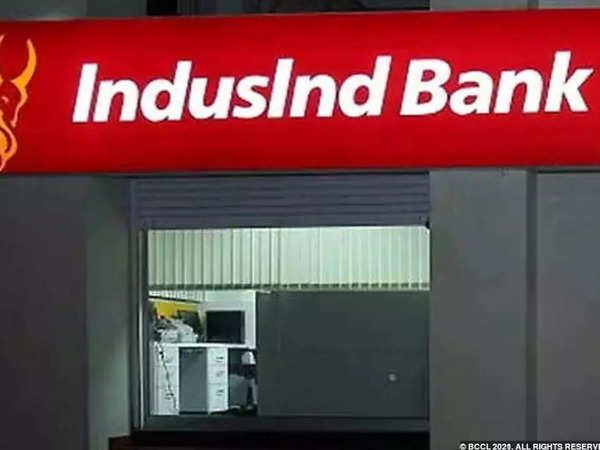25 Oct , 2024 By : Debdeep Gupta

Shares of IndusInd Bank plunged 15 percent on October 25, falling the most in nearly 5 months after the lender reported a poor set of numbers for the quarter ended September 30, 2024 (Q2 FY25). Data also showed that 2.38 million shares of the bank changed hands in different block deals.
IndusInd Bank reported a significant drop in its consolidated net profit for Q2 FY25, falling 39.5 percent year-on-year (YoY) to Rs 1,331 crore. The bank’s net interest income (NII), a key indicator of profitability, saw a growth of 5 percent on-year to Rs 5,347 crore during the July-September quarter. Despite the growth in NII, the overall profit fell, indicating pressure on other financial metrics.
However, the growth in NII was below market expectations. The bank’s net interest margin (NIM), a key indicator of profitability, fell to 4.08 percent from 4.29 percent in the year-ago period, indicating some pressure on margins. At 9:55 am, IndusInd Bank shares were trading 14 percent lower at Rs 1,099.30 on the National Stock Exchange (NSE).
HSBC still maintained a 'buy' rating on IndusInd Bank but lowered its target price to Rs 1,510 per share from Rs 1,770 earlier. The downgrade stems from disappointing performance in microfinance loans, which led to adverse movements in loan growth, net interest margins (NIM), and credit costs.
Consequently, the brokerage reduced its earnings per share (EPS) estimates by 8.7 percent to 21.4 percent for FY25-27, reflecting the impact of lower loan growth and pressure on earnings metrics. Despite these challenges, HSBC highlighted that at 1.3 times FY26 book value per share, the company presents a favorable risk-to-reward ratio.
Motilal Oswal also issued a 'buy' call for IndusInd Bank, setting a target price of Rs 1,500 per share. The second quarter was noted as weak, but the bank is navigating near-term challenges, it said.
The brokerage reduced its earnings estimates by 16.7 percent and 8.7 percent for FY25 and FY26, respectively, projecting a return on assets (RoA) and return on equity (RoE) of 1.6 percent and 13.6 percent by FY26.
Key near-term events to monitor include the progression of asset quality in the microfinance business and the RBI's approval for a fresh term for the bank’s MD and CEO, said Motilal Oswal.
IndusInd Bank's provisions and contingencies ballooned 87 percent YoY basis to Rs 1,820 crore from Rs 974 logged in the corresponding quarter of the previous fiscal. This includes an increase of Rs 525 crore in the contingent provisions as a prudent measure by the bank.
Total loan-related provisions stood at Rs 8,412 crores (2.4% of loan book) as of September 30, the lender said.
Provisions represent liabilities whose timing or amount is uncertain. Banks set aside these amounts from their profits to cover potential expenses or obligations. As a liability account, provisions involve allocating and reserving resources for these anticipated costs.
Contingent liabilities, on the other hand, are potential obligations that may emerge in the future as a result of current or past events.
0 Comment